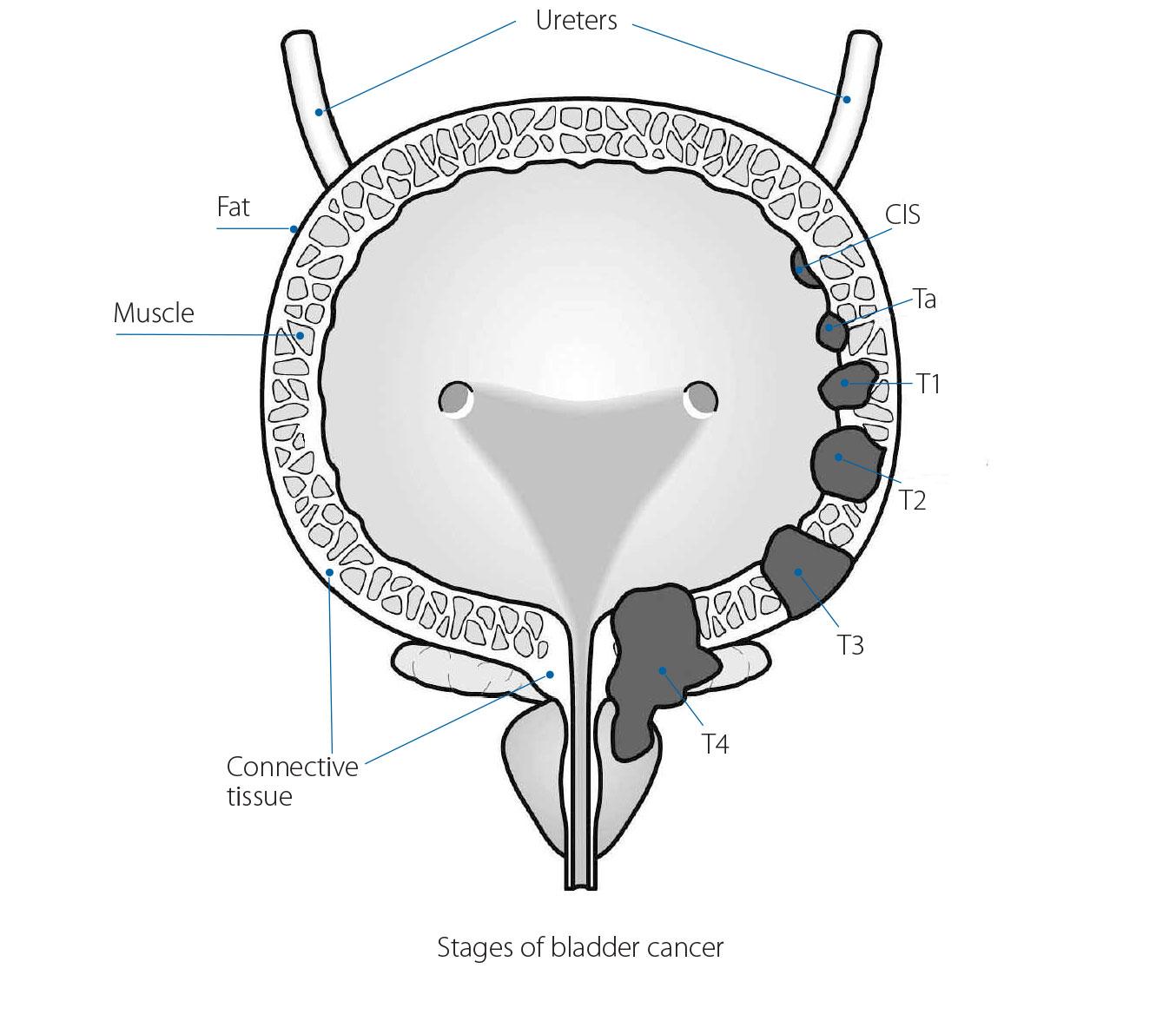What are the grades and stages of bladder cancer?

On this page:
What are the grades of bladder cancer?
Grading describes how quickly the cancer may grow and spread.
- Low-grade bladder cancer: The cancer cells look only slightly abnormal, much like normal bladder cells. The cancer is usually slow-growing and less likely to spread than high grade bladder cancer.
- High-grade bladder cancer: The cancer cells look fairly or very abnormal and are more likely to grow quickly. Carcinoma in situ (CIS) is always classed as high grade.

Grading: Grading describes how quickly the cancer may grow and spread.
Staging: Staging means finding out how deeply the cancer has grown into the bladder and if it has spread to other parts of your body.
What are the stages of bladder cancer?
Staging means finding out how deeply the cancer has grown into the bladder and if it has spread to other parts of your body. Staging will help your doctor to plan the best treatment for you.
The staging system normally used in bladder cancer is called TNM. This stands for:
- Tumour (T): How deeply has the tumour has grown into the bladder?
- Node (N): Is there cancer in your lymph nodes?
- Metastasis (M): Has the cancer has spread to other parts of your body?
Your doctor often uses this information to give your cancer a number stage – from 1 to 4.
A higher number, such as stage 4, means a more advanced cancer. Some stages are further divided into stage A and B.

More about staging bladder cancer
The most common bladder cancer - non-muscle-invasive bladder cancer - will be staged as follows:
- Carcinoma in situ (CIS): This appears as flat, red areas in your bladder. This type of bladder cancer is more likely to come back after treatment, often as another non-invasive cancer in the bladder. CIS is always classed as high grade. It can grow more quickly and can become invasive. This means it may need different treatment to other non-muscle-invasive bladder cancers.
- Ta: Here the tumour is found as a mushroom-like growth (papillary cancer) growing only in the innermost lining of your bladder.
- T1: The tumour has started to grow into the connective tissue just below the bladder lining.
The rarer muscle-invasive bladder cancer is staged as follows:
- T2: The tumour has grown into the muscle layer in your bladder.
- T3: The tumour has spread through the muscle layer to the outer fat layer around your bladder.
Advanced / metastatic bladder cancer
- T4: The cancer has spread outside your bladder to other organs. For example, with locally advanced disease, the cancer may have spread into the pelvic wall, the prostate in men, or the womb or vagina in women. If there are distant metastases, it means the cancer has spread beyond the surrounding areas, to other parts of your body such as the liver, bones or lungs.
Nodes (N)
- N0: No cancer is found in any of your lymph nodes.
- N1: Cancer is found in one lymph node and is smaller than 2 cm.
- N2: Cancer is found in one lymph node and is bigger than 2 cm but less than 5 cm OR the cancer has spread to more than one lymph node, but is smaller than 5 cm.
- N3: Cancer is found in at least one lymph node and is 5 cm in size.
Metastasis (M)
- M0: The cancer has not spread to other parts of your body.
- M1: The cancer has spread to other parts of your body. This is also known as secondary, metastatic or advanced bladder cancer. The organs likely to be affected are your bones, liver or lungs.

It can be hard to understand staging and grading. Ask your medical team to explain again if you have any questions. You can also talk to our cancer nurses. Call our Support Line or visit a Daffodil Centre.
For more information
Phone
Freephone 1800 200 700




